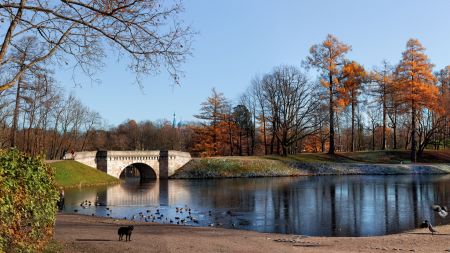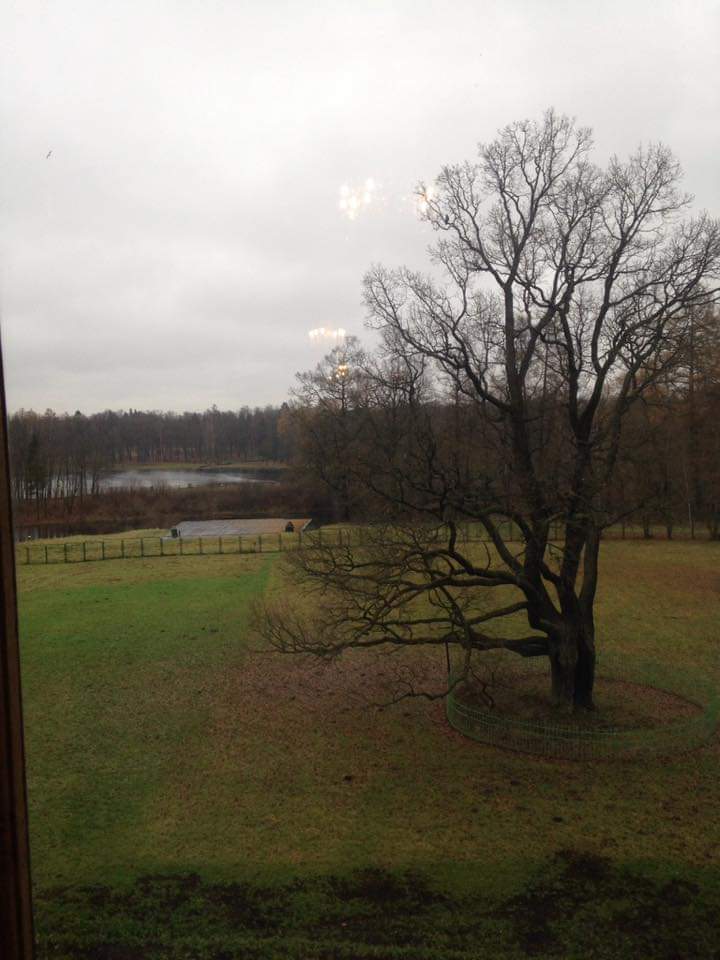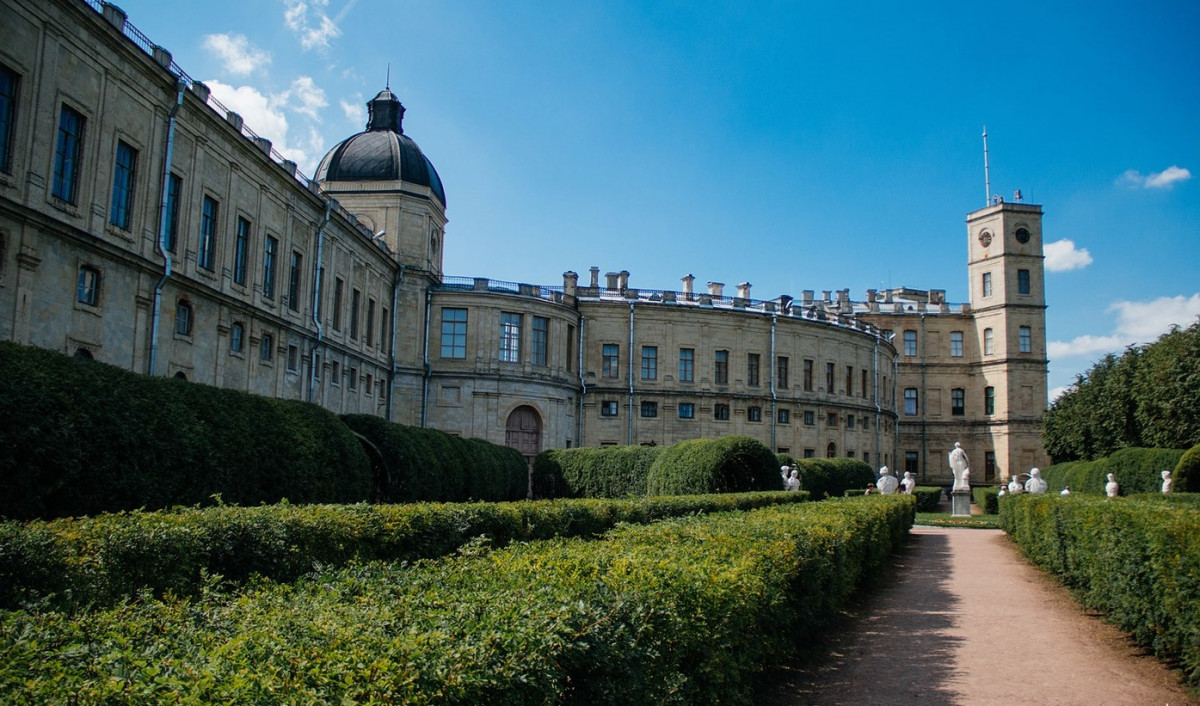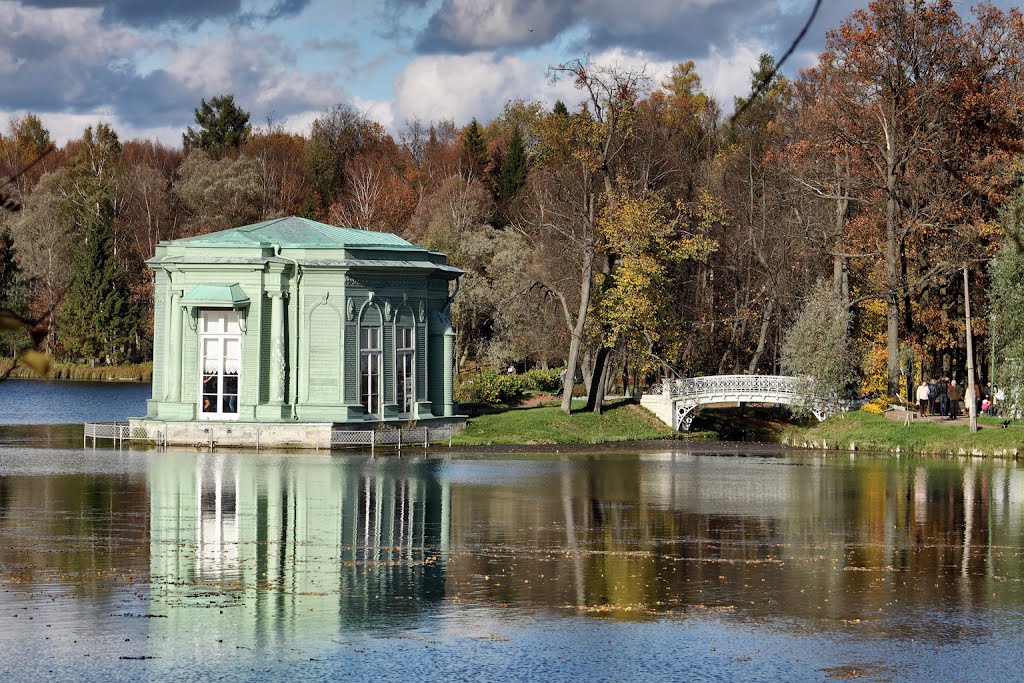
It may be said without exaggeration that the Gatchina Palace and Estate Museum is among the most beautiful palaces and parks complexes in Russia and consists of two famous palaces unique in their architecture, a one-of-a-kind landscape park with a picturesque terrain, spring-fed lakes, connected by channels and streams ... After a walk through the magnificent state-rooms of the late 18th century and the tsar’s rooms of the 19th century, you can go down to the Underground passage, go up the stairs to the observation deck of the Signal Tower, take a walk through this mysterious park different from any other ones.
Vasily Pankratov, Director of the Gatchina Palace and Estate Museum, told EcoTourism Expert about the enormous work being done and to be done aimed at returning the unique and romantic look to this place full of legends and important events in the Russian history.
- I almost did not know Gatchina as earlier, I more often visited Tsarskoye Selo (Tsar Village), Pavlovsk, Peterhof, and when I got here for the first time, I had the feeling that the Palace was very small. By 1985, only three halls were restored, all the rest was destroyed. After the war, the decision was taken not to restore this Palace, the collections were transferred to other museums across the country for storage, and the building was given to the military - the Gatchina Palace housed a branch of the Naval Academy of the USSR, and later, the classified All-Union Research Institute, so, during all these years the Palace’s condition was getting worse. However, there was once a time when Gatchina was known as the ‘second capital’ of Russia because for 13 years, Emperor Alexander III ruled the country from Gatchina.
During World War II, the Gatchina Palace suffered less than other palaces in the vicinities of Leningrad that were on the front line. In January 1944, a fire destroyed the interiors of the Arsenal Wing and the Central Building, but did not touch the Palace Church located in the Kitchen Wing: the fire stopped on the stairs leading to the Church. This event is considered one of the Gatchina wonders. By the way, when I started working here, another miracle happened - in the Church, in the caissons of the altar dome, 96 cartoons with sketches of cherubs were found under a layer of papers.
The Museum workers dreamed of returning to the Palace and did their best to make this happen. There are also many stories and legends about this. They say, that once someone suggested writing a letter to L. I. Brezhnev. How to deliver the letter? Support came from an unexpected direction. One elderly employee said that during the war, he had a boy in a platoon of miners whose name was Grisha Romanov. He was the same Grigory Romanov who later became the first secretary of the Leningrad Regional Committee of the CPSU. “I taught him everything, and at any moment, I can call him.” And indeed, he called Grigory and asked him to give the letter to Brezhnev personally. According to this legend, the Museum workers’ request was considered at the Plenum of the Central Committee of the CPSU, and the decision was taken to return the Gatchina Palace to the Museum. That was in the late 1970s. In fact, the Museum opened in the 1985, on the Victory Day.
Your background is the Faculty of Physics of the LSU and the Literature Institute. How and when did you get here?
In 2010 year. For five years before that, I had been the Deputy Chairman of the Committee on Culture in the City Administration, and even earlier, I had worked at the Museum of the History of St. Petersburg, and I wanted to return to the museum sphere. I had no great hopes, I knew that there was no money in this sphere, no visitors, no active life for most of the year, and everything was destroyed. At that time, 11 state-rooms were opened in the Central Building, something was repaired, the rest, 80 percent, was littered with construction waste. In the Kitchen Wing - the western wing of the Palace - until recently, homeless people lived. The Greek Gallery, which we restored 5 years ago, was then one of the abandoned rooms. Once, I came there after office hours, took the bags and began to collect garbage. Two days later, my deputies joined me, then the heads of departments, then the whole Museum personnel. What the eye fears, the hands do as all things are difficult before they are easy. We cleaned slowly all the rooms. However, I could not imagine then that I would ever see the Greek Gallery restored.
What happened to the Park?
The Gatchina Palace Park was also in a bad way and rundown as for twenty years, it has not been cleaned, it was not guarded and people could take a walk here, and also go fishing here, ride a car, have a drink, and grill barbecue. In winter, all the slopes turned into slides, and in the summer, all banks became a public beach. In fact, it was a recreation area for the local people, everyone had rest as they wanted, although legally the Park was part of the Museum.

The Grand Duke Pavel Petrovich rebuilt the Gatchina Palace, he invited his favourite architect Vincenzo Brenna, and Brenna modified Rinaldi's original design, he closed the open galleries and elevated the wings. After the death of Pavel, the Dowager Empress Maria Fyodorovna lived in the Palace.
The Park must have had an interesting story - royal hunting: people, lions, eagles and partridges ... (sounds like in The Seagull by Chekhov)

In the Gatchina Palace, the tsars lived rather modestly, almost like ordinary bourgeois, the representatives of the middle class; this can be seen in the exposition ‘Personal Rooms of the Family of Emperor Alexander III’. After the assassination attempt on Alexander II, a safe place was searched for his son’s residence and it was found here. The tsar was guarded by several regiments of soldiers, but he freely walked alone and with other children, hunted and fished where he wanted - in this protected area, behind a high fence. When he died, Nikolai II who grew up here and also loved these places came here to his mother, the Dowager Empress Maria Fyodorovna.

Coming back to the Park, what is its ecological state?
If we talk about the ecology in the direct sense of the word, the state of the Park was terrifying. The Park is a man-made creature, and a very complex and sensitive organism. It was created by many gardeners and architects. Each part of the Gatchina Park has its own name, its structure, its purpose. There is a regular part and a landscape part, there are the Dutch Gardens with flowerbeds, and the Botanical Gardens with ponds and the Flower Hill, the Water Labyrinth with winding canals, and the Green Labyrinth with an intricate network of paths. There are many architectural buildings in the Gatchina Park - pavilions, greenhouses, guardhouses, bridges, and gates. The heritage can be preserved and transmitted to the future generations with a special, careful attitude to it only. While Petergof, Pushkin, Pavlovsk have been museums for the past hundred years, their parks were protected as much as possible, Gatchina, deprived of the Palace, was turned into a recreation park - a nondescript area with uncontrolled use for various social needs.

What is the situation with financing?
So far, there is no reason to complain. We are a St. Petersburg museum and receive funding from the budget of St. Petersburg. The City Committee for Culture does its best to help, and recently, the St. Petersburg Committee for Protection of Historical and Cultural Landmarks also takes part in financing.
Although, there are problems at the Gatchina Park that even financing alone cannot solve. I mean, cleaning the lakes. The Gatchina Park is called a hydropark - water occupies a third of its territory. And this water body does not belong to St. Petersburg, it is a federal one. Today, the depth of bottom sediments is already several metres; the distance between the silt and the water surface is almost absent in many places. If not for the springs, the lakes would have turned into a swamp long ago. We have been sounding the alarm for many years, but only now, we got the ball rolling - thanks to the participation of the Ministry of Natural Resources and Environment of the RF, a project has been developed to clean the lakes and the Tyoplaya (Warm) River, and they promise to start the work next year.
Another pressure point is transit. The Gatchina Park is located in the central part of the city, and the only convenient way from one district to another is through this Park. We are reducing the number of entrances and the townspeople are not pleased as getting from one point to another has become inconvenient. It is no pleasure at all to walk around the Park along the avenue with a narrow sidewalk where cars riding fast splash dirty water under wheels on people in rainy weather - from head to toe. I understand this and, therefore, have been negotiating with the city management for many years asking them to do something about it.
The more manicured and smart the Gatchina Palace Park becomes, the more difficult it is to maintain and ensure safety and comfort. Indeed, among all the reserves of St. Petersburg and the region, the Gatchina Park is the only one available free of charge.
About the Menagerie: does it justify its name?
Do you want to ask how many animals inhabit the Park? Many. There are also wild ones - foxes ran in winter. Sheep, goats, rabbits, emu ostriches, ducks, geese live on the farm; last year, peacocks and pheasants were acquired. Two years ago, a pair of swans appeared here - have you heard about them? The swans lived loose here, made it through the winter well, were not afraid of people, everyone loved them. In the spring, they made a nest in a secluded place. The female swan was already sitting on eggs when it was found dead one night. According to the official version, a pack of pariah dogs attacked it. The bird's neck was broken. Six eggs remained in the nest. At first, they were taken to an incubator, but then, on the advice of specialists, they were returned to their place. And the male swan took the female’s place and it did not leave the nest for two weeks. Four swan chicks pipped, although, unfortunately, the swan managed to save only one. It was a sight to see how it guarded, taught its swan chick, put the chick on its wing. There were so many reports in the media about this, everyone in Gatchina area watched and hoped ... They are still swimming together. We do not yet know whether the swan chick is a female or a male. If it turns out to be a ‘boy’, we will need two new female swans - I hope that the swan couples will be friendly and build their nests nearby.
Can't they be on the farm?
In the cage? We feel pity for them. Free birds feel better in the wild.
What work do you plan in the Park in the near future?
At present, everything in the Park is cleared of deadwood, of small self-sown plants, soil is uncovered a little, and it began breathing - this is good. The bad thing is that fewer forest birds left here, because the undergrowth has gone - that means we have to do planting. The next stage is the transformation of the cleaned woodland into an imperial park.
In your Gatchina Museum and Reserve, holidays, educational programmes and cultural events are held. Tell us about this part of the work and your plans in this field?
This year we dedicate to Emperor Alexander III, his 175th anniversary is on March 10. The Museum will open several new exhibits: the room of Grand Duke Mikhail Alexandrovich, an exposition dedicated to the children of Alexander III, private rooms of Emperor Nikolai I. In summer, a monument to Alexander III will be installed in the courtyard of the Arsenal Wing. In the fall of 2020, we will hold the exhibition ‘Alexander III and Tchaikovsky’ and a scientific conference. Besides this, the Museum regularly offers sightseeing and themed tours, family and children's programmes, quests and master classes. The theatrical and concert season will also be saturated - we invite everyone to the Theater Hall of the Gatchina Palace.
